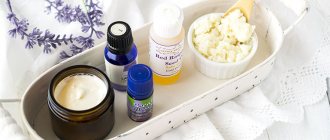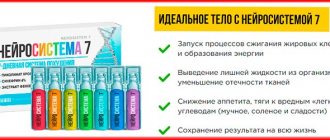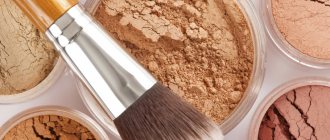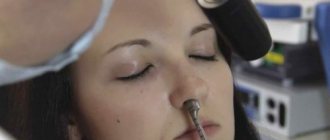Abscesses with purulent contents, depending on the clinical picture, may differ in size, pain, and amount of discharge. They may appear on the body area, on the arms or legs. Folk remedies for abscesses help get rid of the problem in a short time and restore the skin to a clean and silky appearance. In order not to harm your health even more, you should follow some rules when treating at home.
What are abscesses on the body and why do they appear?
Purulent inflammations on the skin of the arms, legs, back, buttocks, and abdomen are most often boils or carbuncles. Panaritium often appears on the fingers of the limbs.
A furuncle is an acute purulent inflammation of the follicle, sebaceous gland and surrounding skin.
It can develop on any part of the body that has hair, with the exception of the palms and soles, where there are no follicles. The face, back of the head, groin areas, buttocks, dorsum of the forearms are the most “favorite” places for boils to localize. The most common pathogen is staphylococcus. The appearance of furunculosis is preceded by frequent contamination and friction of the skin on clothing, mechanical damage and injury from surrounding objects. Getting dandruff or particles of seborrheic dermatitis into a microcrack in the epidermis can also cause an abscess. People with diabetes and other endocrine and autoimmune diseases are more prone to the appearance of boils.
A carbuncle is several boils connected to each other under the skin by multiple passages. Folk remedies for abscesses, if they are carbuncles, are powerless. Professional pharmaceutical therapy is required; this is the only way to completely get rid of all lesions without causing even greater health problems.
Panaritium most often develops on the third phalanx of the fingers due to inflammation of a hangnail. To avoid its appearance, you should wash your hands thoroughly and when manicuring, use only proven tools that have been pre-treated with alcohol tincture.
Traditional treatment
A few years ago, boils could only be removed surgically. But today everything has changed; if the tumor is small and does not pose a threat to human life, then less traumatic treatment can be used. The most popular procedures are:
- Laser therapy. During this procedure, the patient's skin suffers the least. It only takes 10-15 minutes to remove a boil. The procedure is virtually painless, so there is no need to use local anesthesia. After removal, a small wound remains on the skin, which in 98% of all cases heals without forming a scar.
- You can remove the tumor with regular salicylic acid. The product is carefully applied to the affected area of the skin, wrapped with a sterile bandage and left for two days. During this time, the formation of a necrotic core should occur, as well as the opening of the boil itself. It is worth noting that this option is only permissible if the diameter of the growth does not exceed 0.7 cm.
- Surgical intervention is used less often. Such a radical treatment is used if the laser knife is no longer appropriate. The procedure is performed only under local anesthesia. In especially severe cases, temporary drainage can be installed in the wound, which helps prevent new suppuration.
Only a qualified doctor can decide exactly how to remove a boil. Since it necessarily takes into account the size of the growth, its location and the general condition of the patient.
List of the most effective home treatments
The main goal in the treatment of boils, carbuncles and panaritium is to allow the purulent contents to come out, and not inside. To do this, you should treat the abscess with folk remedies, but under no circumstances squeeze it out. When trying to squeeze out on your own, the pus most often goes deep inside, resulting in sepsis or even more complex blood poisoning. In a hospital setting, the surgeon can perform a dissection with a scalpel or other special instruments - the main condition for performing such an operation is complete sterility.
The most effective methods of treating abscesses with folk remedies:
- heating with hot salt and flour;
- applying baked onion to the boil;
- crushed garlic lotions;
- homemade honey ointment;
- compresses from the juice of fleshy aloe leaves;
- treatment of boils and panaritium with potatoes;
- baths and steaming with infusions of medicinal herbs.
What to do if the boil does not ripen
Normally, the boil matures and opens on its own after 7-10 days. If this does not happen, you need the help of a doctor. Depending on the patient's condition? The doctor will prescribe surgical treatment, antibiotics or physiotherapeutic procedures.
The abscess may not ripen for the following reasons:
- Incorrect formation of a purulent-necrotic core. The pus spreads deep into the skin, rather than upward.
- The boil is not ripe, you need to wait another 2-3 days. The maturation time is individual for each patient.
- The boil cannot break through due to its inconvenient location (intimate areas of the body, nose, ears).
- Thick skin at the top of the abscess; the boil cannot open.
The absence of a purulent-necrotic core may mean the transition of the boil to the abscess stage. The formation will not go away on its own, you need to urgently consult a doctor. The abscess can break through the skin and cause blood poisoning. To treat an abscess boil, only surgical treatment is used.
Treatment of the abscess is carried out after full maturation and the formation of a purulent-necrotic core.
To quickly get rid of furunculosis, avoid touching the abscess with dirty hands or injuries during treatment. Wash your hands with antibacterial soap. The abscess will go away faster in the absence of irritating factors. It is recommended to avoid wearing clothes made of synthetic fabrics, to avoid friction and mechanical injuries to the boil. The article has been verified by the editors
Heating with salt and flour
The method gained popularity back in the Soviet years. This simple folk remedy for an abscess on the finger, back or stomach can be used by both adults and children. Helps the abscess to mature faster and the purulent root to come out.
- Prepare a small bag in advance from dense natural fabric (you can use calico folded in half).
- Heat salt or flour in a frying pan. You should follow safety precautions when doing this, as you can easily get burned. To avoid getting burned, after calcination, leave the salt on the stove for a while to cool.
- Pour the heated salt or flour into the bag, making sure that the contents do not spill out.
- Apply to the sore spot and wait until it cools completely (usually this takes about twenty to thirty minutes), then repeat the procedure again.
Folk remedies for abscesses using salt are quite dangerous (due to the possibility of getting burned). However, they are still one of the best. Only one folk remedy for abscesses can be compared to them in the speed of “pulling” purulent contents outward - baked onions. Since the main goal of treating both boils and whitlows is to remove the purulent core, methods of softening and moisturizing the skin are not suitable for combating abscesses. The ideal methods are to “pull” the rod outward.
Baked onions are the No. 1 remedy in the fight against abscesses
This method also became popular back in the Soviet years and is still the No. 1 remedy in the fight against purulent abscesses. For the procedure you will need a regular onion. Most often, this is enough - after a few procedures, other folk remedies for purulent abscesses are not needed, since the contents come out. In this case, you cannot squeeze or otherwise mechanically influence the source of inflammation.
- Cut a slice from the onion and heat it over an open fire or in the oven. As a result, its edges should be slightly singed and the core should be slightly baked. In this case, the bulb should not be burnt.
- Apply a hot, not yet cooled piece to the boil. Fix in one place with a cotton pad, then with an adhesive plaster.
- You should keep this compress for about twenty to thirty minutes, then change the bandage to a new one. In most cases, five or six such compresses are required for the purulent core to come out.
Onions have powerful disinfecting properties, and patients are often surprised - why should they be baked? In fact, to treat abscesses, it is baked onions that are required; raw ones are much less effective.
This folk remedy for abscesses on the leg, arm, back, stomach, torso and even face can be used many times in a row. It is completely safe, has no side effects and almost never provokes an allergic reaction.
How to understand that a boil is going away
You can understand that the chiryak is passing by the following signs:
- swelling decreases and swelling softens. If the pus has not yet completely come out, then a slight compaction can be felt;
- A purulent core should pop out of the wound, the contents should be yellow or greenish in color. After the pus is released, a scar hole appears, which closes after a couple of days, with proper treatment;
- after removing the suppuration, liquid ichor without purulent impurities oozes from the wound;
- 2-3 days after opening the boil, swelling and redness decrease, and pain disappears when treating the wound.
You can determine that the chiryak has passed by the scar left behind. You can speed up the healing period by using ointments to treat the wound.
Ointment based on propolis and honey
This folk remedy for an abscess on the finger can be easily prepared at home. In terms of action, it is no worse than pharmaceutical creams and ointments for panaritium. Has a disinfecting and anti-inflammatory effect. You can alternate the use of this ointment with the use of baked onions or hot salt compresses. This combined action will relieve pain as much as possible and contribute to the speedy healing of the abscess.
- Buy an alcoholic tincture of propolis at the pharmacy or make it yourself from ready-made propolis and vodka.
- Mix propolis tincture, fresh honey and Vaseline in equal proportions.
- Apply a thin layer to the abscess itself and the area of skin around it. Just a minute after application, the patient will feel relief: the pain, burning and itching will go away, and it will be possible to do household chores, forgetting about the abscess for a while.
Key Features
The medical reference book contains information that boils are inflammatory and very painful cavities in the epithelium, which are gradually filled with pus. If several such rashes form on the skin at once, then the patient is diagnosed with a specific disease.
Furunculosis is different in that subcutaneous abscesses have different sizes (for example: in some patients the growth does not exceed the size of a pea, but in others it can grow to the size of a walnut). All types of such neoplasms require high-quality treatment, which can be carried out even at home. The localization of furunculosis can be very diverse, since growths are diagnosed in any part of the human body.
The most dangerous situation is when boils have formed in the deep layers of the epidermis. Such growths are called carbuncles.
Neoplasms can develop at high speed, gradually spreading over the entire surface of the body, penetrating the bloodstream. Against this background, the patient’s well-being only worsens. To accurately determine the degree of furunculosis, you need to visit a qualified dermatologist. After a thorough examination, he will be able to prescribe the most appropriate therapy. If the patient's condition is not critical, then treatment can occur at home.
Treating boils with aloe
Almost every housewife grows aloe. This is a perennial plant with fleshy leaves, inside of which there is a thick, odorless and colorless juice. Has antiseptic and anti-inflammatory properties. Aloe juice is a popular folk remedy for abscesses on the arm, leg, and back.
It should be used with caution - the natural ingredient often provokes the development of an allergic reaction, which may result in increased burning and itching in the area of the abscess. It is optimal to test your skin for allergies and tolerance before starting to use aloe juice - apply a few drops to the inner bend of the elbow, and if skin irritation does not appear within a few hours, you can safely use aloe to treat abscesses.
You should tear off the leaf closer to the ground - about one centimeter from the main stem. Squeeze the thick juice onto a spoon and generously moisten the boil or panaritium with it. Secure with a cotton pad soaked in Chlorhexidine or any other disinfecting liquid. Leave the lotion for about twenty minutes, then change to a new one in the same way.
Treatment with potato juice: compresses and ointment
Potato juice can be used in its pure form, or you can prepare an ointment with it. It has excellent astringent properties, mild analgesic and antibacterial effects. Of course, potato juice cannot replace antibiotic ointment, but it can help get rid of pain and speed up the maturation of boils and panaritium. Potato juice is one of the most effective folk remedies for treating abscesses on the finger.
- The ointment should be prepared as follows: mix Vaseline, raw potato juice, aloe juice, and honey in equal proportions. If you don’t have aloe in the house, it doesn’t matter; you don’t have to include this ingredient in the ointment. Mix the ointment thoroughly until smooth and apply to the finger (or other area affected by furunculosis) several times a day - as a compress or simply on the skin.
- Compresses from potato juice should be made as follows: grate the peeled tuber on a fine grater and squeeze out the juice. Soak a cotton pad with it and apply it to the abscess. Secure with a bandage and adhesive tape. leave for an hour or two. Then the compress must be changed to a fresh one - otherwise putrefactive bacteria will form under the bandage, which can aggravate the course of the disease.
Actions for self-opening of a boil
The first thing to do in this event is to prevent re-infection. To do this, you need to wipe your hands with alcohol. Then, moisten a cotton pad with it, wipe the boil, while removing the released pus. After treatment, you need to apply a bandage with Vishnevsky or ichthyol ointment.
To prevent such an incident from taking you by surprise on the street, carry a bottle of alcohol, a bandage and any ointment with you during your illness.
Often a breakthrough is accompanied by slight bleeding. It is dangerous because bacteria can enter the circulatory system. To stop it, you need to perform the following manipulations:
- Rinse the wound cavity with an antiseptic.
- Fill it with cotton wool wrapped in a bandage.
- Apply a pressure bandage.
- Contact a medical facility.
When contacted, your doctor may prescribe a course of antibiotics to prevent blood poisoning.
Treatment of abscesses with nettle infusion
Nettle is a plant that has many medicinal properties. Folk remedies for an abscess on the finger involve both the use of the juice of a fresh nettle stem, and a bath or compress from a decoction of this plant. To get rid of an abscess, you should generously lubricate the damaged area with nettle juice, and you should squeeze it out while wearing special gloves to avoid getting burned.
This remedy can be combined with other folk remedies for abscesses on the toe. This complex effect will help get rid of purulent formation on the fingers and toes in just two to three days. For example, in the morning and evening - salt heating, at lunch - two compresses of baked onions, and in between these manipulations simply lubricate the abscess with nettle juice.
Reasons for development
The formation of boils most often occurs as a result of damage to the skin by dangerous Staphylococcus aureus, streptococci types A and B, as well as other pathogenic microorganisms. The disease can manifest itself in the presence of certain pathologies in the human body:
- Serious disruptions in the functioning of the endocrine system.
- Pathological changes in the digestive organs.
- Kidney diseases.
- Reduced natural protective functions of the epidermis.
- Presence of chronic infectious diseases.
- Decreased immunity.
The body's protective functions are significantly reduced if the patient has previously been diagnosed with chronic forms of disease (sinusitis, pharyngitis, tonsillitis, and intestinal dysbiosis). The causative agents of furunculosis can penetrate through microtraumas of the skin, at the site of which painful growths subsequently appear. That is why, in order to get rid of the disease, you need to try to increase the protective functions of the immune system. The patient must take special vitamin complexes.
To safely remove a boil, you need to visit an experienced dermatologist who can recommend the most appropriate methods of combating the pathology.
Squeezing, removing or cutting pustules at home is strictly prohibited, since such a specific approach to treatment can significantly aggravate a person’s condition. Only a doctor can really assess the degree of complexity of furunculosis in order to prescribe the most appropriate method of therapy.
Treatment of boils with honey and flour
Mix 1 tbsp. l. butter, vodka, honey and flour. The result is a suspension of medium thickness, reminiscent of ordinary pharmacy ointments. If you wish, you can add more vodka to create an infusion. Place the resulting ointment on gauze and attach to the sore spot for 5-6 hours. Usually everything goes away the first time, but if the abscess is large, then repeat the procedure.
An equally effective remedy for abscesses is a honey-soap cake. 100 g of honey and 100 g of grated laundry soap (choose one with a minimum of preservatives and flavors). Melt in a water bath until a viscous, homogeneous mass with a soapy-honey aroma is obtained and combine with 100 g of flour to form a medium-thick cake. Apply this cake to abscesses and boils. Do not press too hard: light contact of the sore spot with the medicinal lozenge is quite enough.
Folk remedies for abscesses on the body containing honey have a disinfecting and anti-inflammatory effect. The moisturizing effect of butter helps alleviate pain, burning and itching.
Methods to accelerate maturation
Local treatment is used. Antibiotic therapy is used when chiria is found on the face and ear, when the diameter of the neoplasm is more than 5 cm. In other cases, drug therapy and physical procedures are performed to accelerate the maturation of the abscess.
Ointments and creams
The action of ointments and creams is aimed at relieving painful symptoms and drawing out pus. It is necessary to regularly smear the boil so that it goes away faster.
| Group of drugs | Pharmacological action, application | Representative drugs |
| Antibiotics |
Antibiotics promote the reverse development of the abscess or an early breakthrough |
|
| Antibacterial ointments | The drugs destroy the waste products of pathogenic microorganisms. Restore intracellular metabolism | Levomekol, dioxysol. When treating a boil on the eye (hordeolum), tetracycline ointment is used. |
| Pulling ointments | Promote the formation of pustules, the formation of a purulent-necrotic core | Ichthyol, heparin, syntomycin ointment. |
| Nonsteroidal anti-inflammatory drugs | Take for elevated temperature, fever, general weakness | Paracetamol, ibuprofen. |
| Drugs that accelerate scarring | Stimulating cell regeneration, preventing the formation of pathological scars | Contractubex. |
For treatment with ointments, it is advisable to use thin gauze bandages, otherwise local hyperthermia occurs (increased body temperature at the site of inflammation). Ointments can be applied to the damaged area.
Lotions
Compresses and lotions should not put pressure on the affected area. Use 3-4 times a day, duration – no more than 20 minutes a day. To make a new boil ripen faster, bandages are made from clean gauze and lubricated with herbal decoctions and creams.
How to prepare lotions:
- use lotions from herbal decoctions (chamomile, coltsfoot, lemon balm) - help reduce pain;
- compresses using ichthyol ointment accelerate ripening;
- lotions made from a yellow film of the bark of oak branches. The raw materials are poured with boiling water and steamed. Apply a piece of bark to the sore spot and fix it.
Solutions
Hypertonic sodium chloride solution is used to make the boil mature and rupture. It is necessary to treat the bandage with the solution and apply it to the affected area. If the medicine is not available, you can prepare it yourself by mixing 1 tbsp. salt with 0.5 tbsp. chilled boiled water.
Other
The physiotherapeutic method used is ultraviolet radiation (UVR). The boil matures faster and breaks through. The dosage is prescribed by the doctor.
Traditional methods that can be used to quickly break through a boil and relieve painful symptoms:
- smear the abscess with aloe juice at night;
- apply lotions from herbal decoctions;
- spread the new growth with baked onions (you can’t use fresh ones, it leads to burns);
- rinsing with brewed strong black tea;
- The boil will burst faster if you anoint the damaged area with grated boiled beets - cut in half and apply with the cut down. Beets draw out pus.
Before using traditional methods, a sensitivity test of the components is first carried out. To begin with, use the product on a healthy area of skin.
Treatment of boils with garlic compresses
The juice of raw garlic cloves has proven itself as an anti-inflammatory remedy many centuries ago. Relieves swelling, itching, burning, helps bring the purulent core of the boil out. Of the minuses, the bitter taste does not allow the use of garlic for gum abscesses.
Folk remedies involve adding pure garlic juice to various compresses. For example, a cake made from honey and butter can be enriched with garlic juice.
Or you can mix half a teaspoon of garlic juice and the same amount of aloe, and make such a compress. Its effect will be simply anti-inflammatory, and analgesic and anti-edematous. Garlic helps especially well in the early stages of an abscess - you can simply cut a clove in half and tape the wet side to a reddened area of the finger or body, where the patient suspects a boil may form. As a rule, this is quite enough - the purulent core resolves before it has time to form. As a result, you don’t even have to treat the disease, because you managed to prevent its development.
Healing baths for the treatment of abscesses in children
If an abscess forms on a child’s body, it is more difficult to treat. Most children are very afraid of all kinds of compresses and other medical procedures, and convincing them that such a procedure is painless can be extremely difficult. There is a solution - baths made from infusions of medicinal herbs will help get rid of boils in the early stages. If felon is ripe on a child’s finger, you can use a warm bath with herbal infusions several times a day. Within a few days, the manifestations of the disease will disappear.
- Pour a tablespoon of nettle, the same amount of crushed dry yarrow and chamomile into 500 ml of water and boil over low heat for ten minutes. Let cool. Make baths for the sore spot - if it’s your feet, you can do a sitz bath. If these are your hands, you can simply dip them up to the elbows (or just your hands, there is an abscess on your finger) in a warm infusion. If there is an abscess on the gum, you can rinse your mouth several times a day with the resulting infusion.
- Pour a tablespoon of oak bark, two tablespoons of nettle and a sprig of mint into a liter of water and boil for about fifteen minutes. Oak bark has excellent astringent properties: this very quickly removes swelling, reduces inflammation and pain from the abscess site. Alas, such baths will not in any way speed up the ripening of the boil root. But the patient will receive relief from the discomfort and feeling of skin tightness.
An interesting way that does not require bath time. Boil a few teaspoons (3-4) of dry pharmaceutical celandine in a glass of water. To freeze. Apply an ice cube to the painful area for a short time - literally for a few seconds, do not cool the skin excessively. This ice therapy from celandine infusion will help get rid of the feeling of tightness of the skin at the site of the abscess, soften itching and burning. As a result, the boil matures faster. If you combine ice treatment or baths with baked onion compresses and warming with salt, you can get rid of a boil or panaritium in a couple of days.











